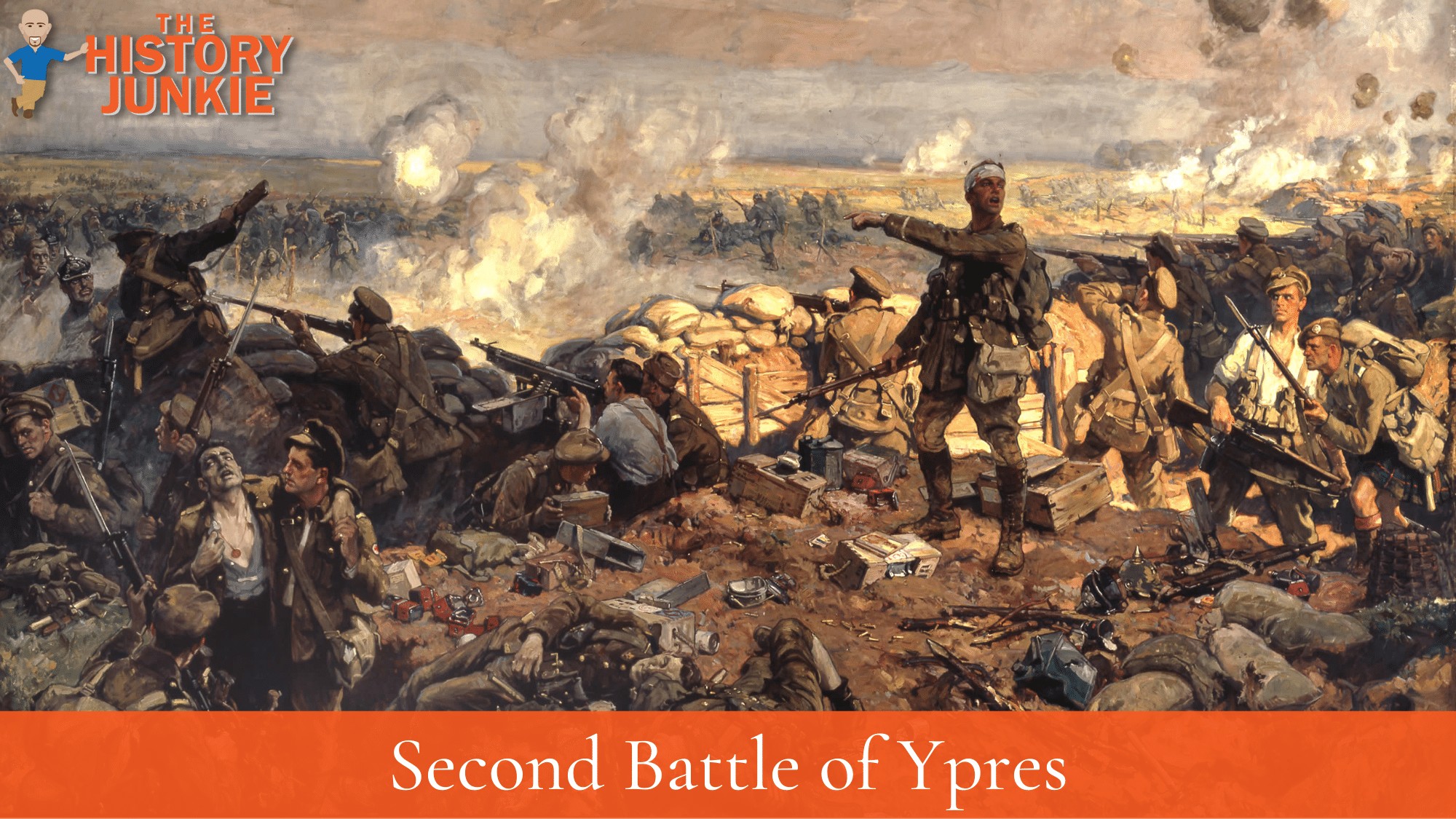The Second Battle of Ypres was a major battle fought on the Western Front of World War I. It took place between April 22 and May 25, 1915, and was the first major attack launched by the German forces on the Western Front in 1915

Read Article: First Battle of Ypres
The battle was fought in the Ypres Salient, a bulge in the Allied lines near the Belgian city of Ypres. The Germans hoped to break through the Allied lines and capture Ypres, which would have opened a path to the Channel ports.
The Fighting
The Germans began the battle with a surprise attack using chlorine gas. The gas was released from cylinders and drifted across the Allied lines, killing and disabling thousands of soldiers. The Germans followed up the gas attack with an infantry assault, which broke through the Allied lines in several places.
The Allies were initially caught off guard by the gas attack, but they quickly recovered and mounted a series of counterattacks. The fighting was fierce and bloody, and neither side was able to gain a decisive advantage.
The battle ended on May 25, when the Germans exhausted their resources and were forced to withdraw. The Allies had held their ground, but they had suffered heavy casualties.
The Second Battle of Ypres was a costly victory for the Allies. They suffered over 69,000 casualties, including over 59,000 British soldiers. The Germans also suffered heavy casualties, with over 35,000 killed or wounded.
The battle was a turning point in the war. It showed that the Germans were not invincible, and it gave the Allies hope that they could eventually defeat the Germans. The battle also marked the first major use of poison gas in World War I, and it would have a lasting impact on the course of the war.
Here are some additional details about the battle:
- The German forces were led by General Erich von Falkenhayn.
- The Allied forces were led by General Sir John French.
- The battle was fought on a front of about 10 miles.
- The Germans used a total of 168 tons of chlorine gas.
